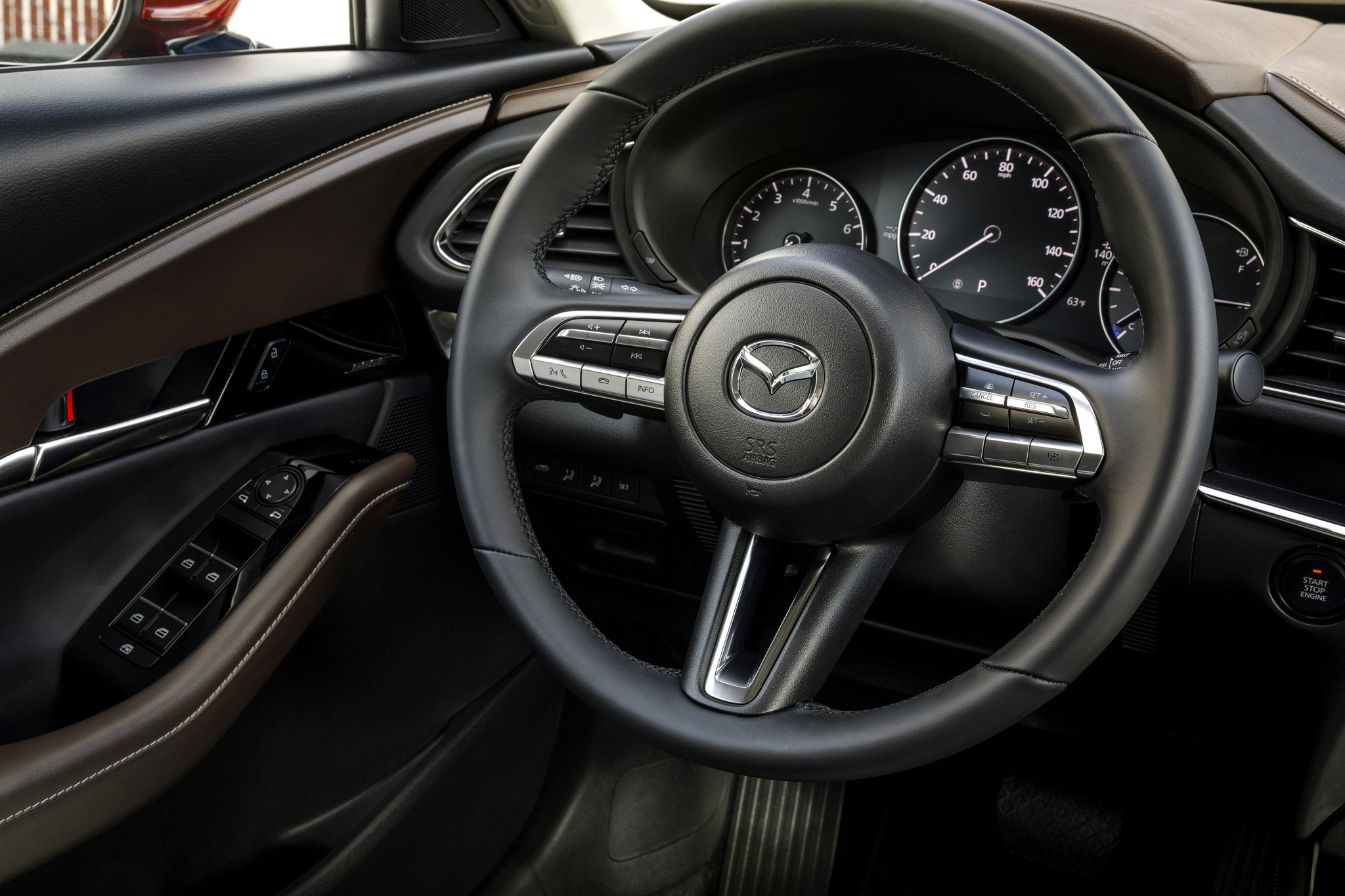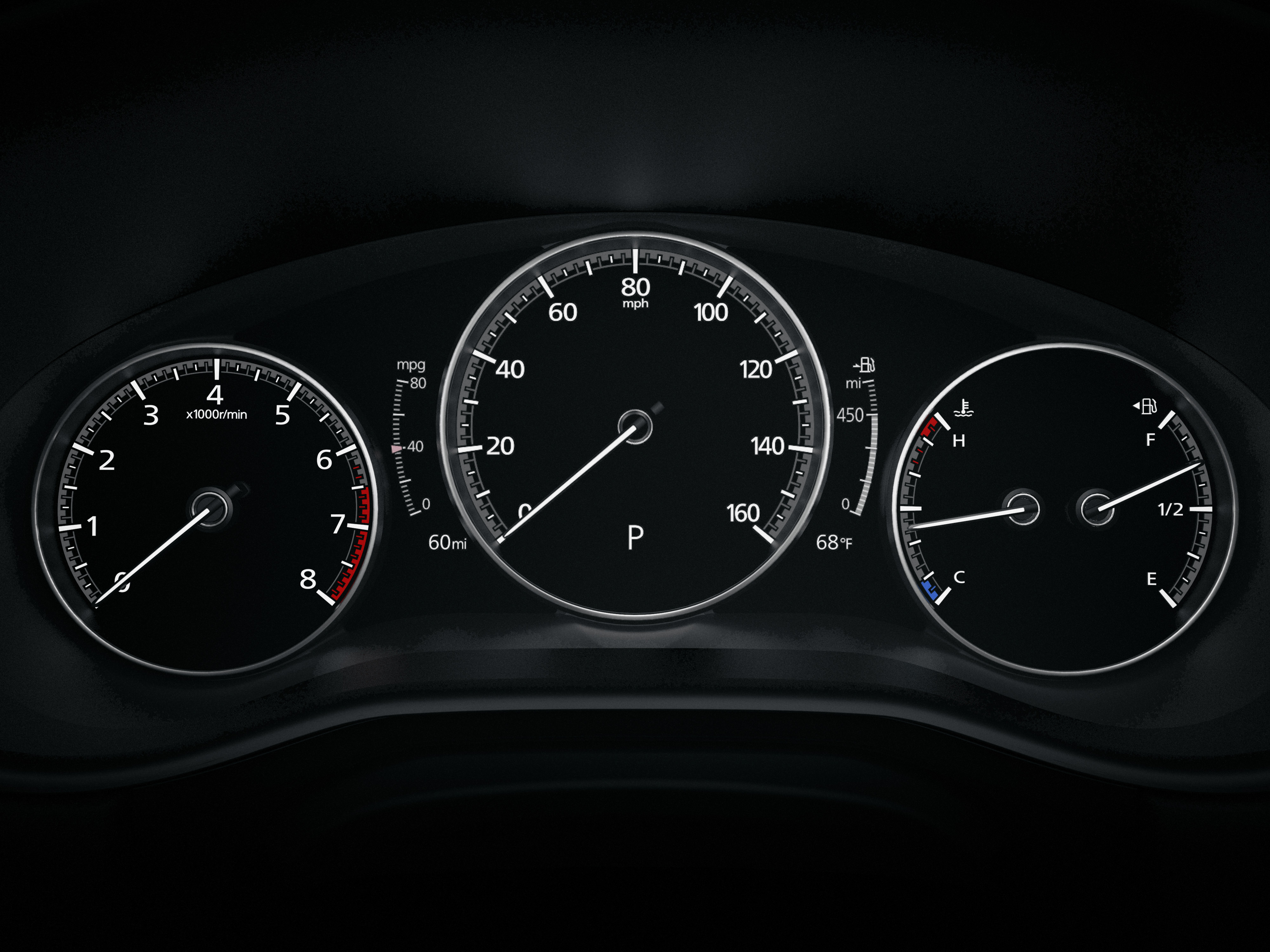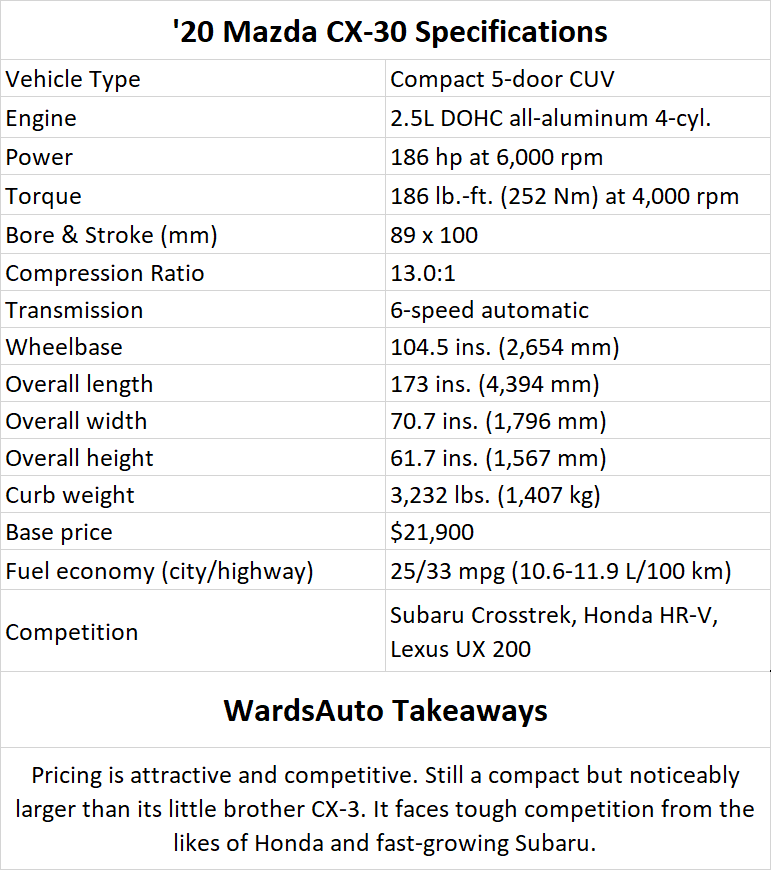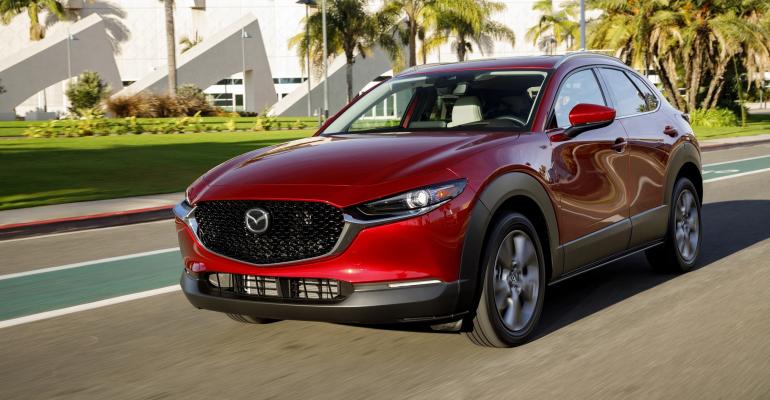PALM DESERT, CA – One compact CUV wasn’t enough for Mazda.
Not in the U.S. market, where the light-truck segment – CUVs, SUVs and pickups – is expected to rise to 75% this year. (There was a time, long ago, when cars accounted for most vehicle deliveries.)
So, the Japanese automaker introduces the all-new 2020 CX-30, a 5-seat crossover that might be described as compact-plus. In the Mazda lineup, it slots between the more compact CX-3 and the midsize CX-5. Rounding out the CUV lineup is the midsize three-row CX-9. (Mazda also offers three cars, two with spinoff versions.)
Why add a second compact CUV to the lineup?
“The CX-30 fits perfectly between the CX-3 and the CX-5,” says Wyatt Jones, CX-30 project manager. “We think we hit this one out of the park.”
The CX-30 is 5 ins. (127 mm) longer than the CX-3 and 6 ins. (152 mm) shorter than the CX-5.
 The two compacts share the same platform. But the CX-3 was designed more for European cities’ narrower streets, Mazda engineer Dave Coleman says at a media event here for the new vehicle. “The CX-30 was designed for the U.S.”
The two compacts share the same platform. But the CX-3 was designed more for European cities’ narrower streets, Mazda engineer Dave Coleman says at a media event here for the new vehicle. “The CX-30 was designed for the U.S.”
“We’re seeing changing customer needs,” Jones says. Younger customers are more active, meaning they need more cargo room for their stuff. Some of them may need more occupancy room for their expanding families.
They might not be ready for the CX-5, but the CX-3 isn’t quite enough for them.
“The CX-3 brought in new customers,” Jones says. But the small CUV segment is softening.
Cue the CX-30. Mazda hopes it will appeal to a wide range of consumers, particularly those young people approaching life transitions. Many of them might be in the market not just for a vehicle but a kiddie car seat, too.
But Mazda isn’t pitching its new CUV to utilitarian-minded consumers who want merely a people mover that looks like two boxes fused together.
The CX-30 is the second model to get the brand’s Kodo Japanese-inspired design. It aims to blend the flowing lines of a coupe with the bold proportions of an SUV. Black cladding at the bottom offers a splash of sportiness.
Whether it’s hauling the brood to Costco, taking a family vacation or off-roading (caveat: the CX-30 is off-roading-light, meaning it’s not a craggy-rock climber), most modern CUVers want style and comfort.
Early utility vehicles were bare. Today’s are filled with accoutrements, technological and otherwise.
Mazda designers said they tried to make the CX-30 look compact from the outside yet feel spacious inside. Nice parlor trick.
By studying the human body, engineers positioned the seats to give all occupants proper posture, not just the driver. (“Sit up straight, Johnny!”) As Coleman notes, “The pelvic bone angle is key to posture and balance.”
The cockpit helps the driver feel connected to the vehicle but not isolated from the other occupants, as desirable as the latter might be at times. (“Please don’t tell me how to drive, dear.”)
For instance, the floor console is outfitted with convenient features and storage areas but doesn’t serve as a great divide between driver and front passenger.
The way Mazda people talk about this vehicle, you’d almost think orthopedic specialists designed it. Case in point: The brake pedal action is gauged for shorter travel to allow the driver to use “the more-developed calf muscle than the less-developed shin muscle,” Coleman says.
This is becoming the age of vehicle interiors as sanctuaries. Mazda has joined the serenity-now movement.
Example: The automaker did a study on how sounds are transmitted through the cabin. Accordingly, sound-system speakers were repositioned, depending on their frequency. Woofers, normally mounted on vehicle doors, are on the CX-30’s side cowls. And the absence of speaker ports in the doors helps keep road noise out.
 The CX-30 joins many other brands in offering its own connectivity app (MyMazda) that, among other things, lets owners use their cell phone to unlock doors and start the engine. (But isn’t that what key fobs are for?) In-vehicle Wi-Fi also is available.
The CX-30 joins many other brands in offering its own connectivity app (MyMazda) that, among other things, lets owners use their cell phone to unlock doors and start the engine. (But isn’t that what key fobs are for?) In-vehicle Wi-Fi also is available.
Included in the CX-30 Select trim level (the second of four) are Apple CarPlay, Android Auto, blindspot monitoring with rear cross-traffic alert and keyless entry.
For buyers going all in, the top-trim Premium model includes head-up windshield displays, leather seats, power liftgate, power moonroof, adaptive front lighting, paddle shifters, cylinder deactivation and LED headlights and taillights.
All models are equipped with a 4-cyl. 2.5L engine with Mazda’s Skyactiv-G, a system designed to increase powertrain through increased torque at low to medium speeds.
The engine puts out 186 hp at 6,000 rpm (Mazda touts that as segment-leading) and delivers up to 186 lb.-ft. (252 Nm) of torque at 4,000 rpm.
Prices range from $21,900 to $28,200 for front-wheel-drive versions. Add $1,400 for i-Activ all-wheel-drive system.
For consumers with a high appreciation of color and are willing to pay extra to satisfy it, the Soul Red Crystal, Machine Gray Metallic and Snowflake White Pearl Mica cost $595, $300 and $200 extra, respectively.
 On a drive from Palm Springs to San Diego, the CX-30 shows its stuff. Yes, it is serenely quiet inside unless you want to crank up the Bose sound system.
On a drive from Palm Springs to San Diego, the CX-30 shows its stuff. Yes, it is serenely quiet inside unless you want to crank up the Bose sound system.
It doesn’t get nervous climbing a mountainous road on the Palms-to-Pines route, so called because it starts in Palm Desert and winds up in high-tree country of a different climate zone.
The engine didn’t want for power at any point, although it won’t set any speed records. (Nor was it designed to.)
And after a long day of driving, no one seemed in need of a chiropractor. Those seats deserve a standing ovation.






